
How to Use DS18B20: Examples, Pinouts, and Specs
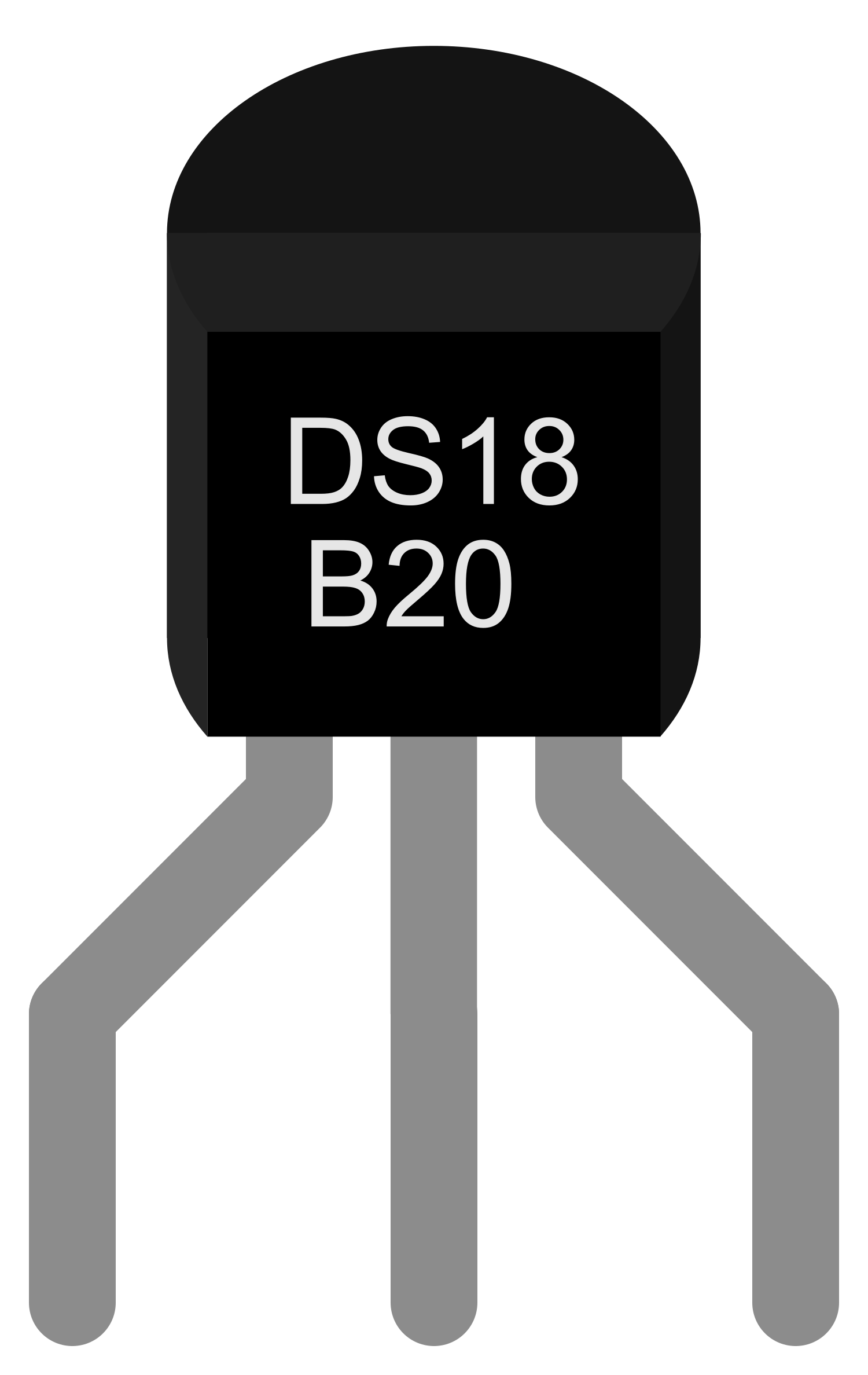
 Design with DS18B20 in Cirkit Designer
Design with DS18B20 in Cirkit DesignerIntroduction
The DS18B20 is a digital temperature sensor capable of providing accurate temperature measurements in Celsius with a resolution of 9 to 12 bits. It features a unique 1-Wire interface, allowing multiple sensors to be connected to a single data line, simplifying wiring and reducing the number of required microcontroller pins. The sensor is widely used in applications such as environmental monitoring, HVAC systems, and industrial temperature control due to its ease of use and reliability.
Explore Projects Built with DS18B20
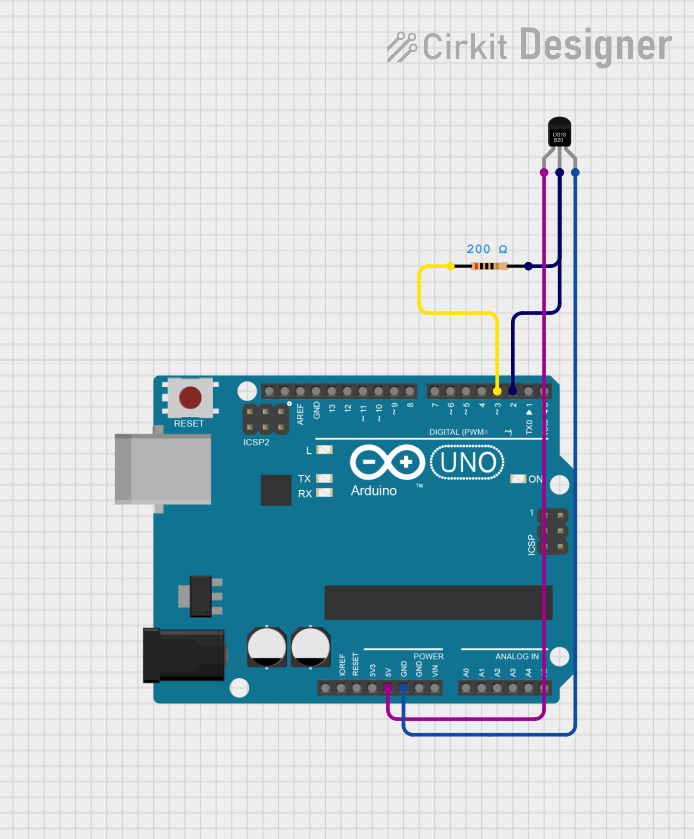
 Open Project in Cirkit Designer
Open Project in Cirkit Designer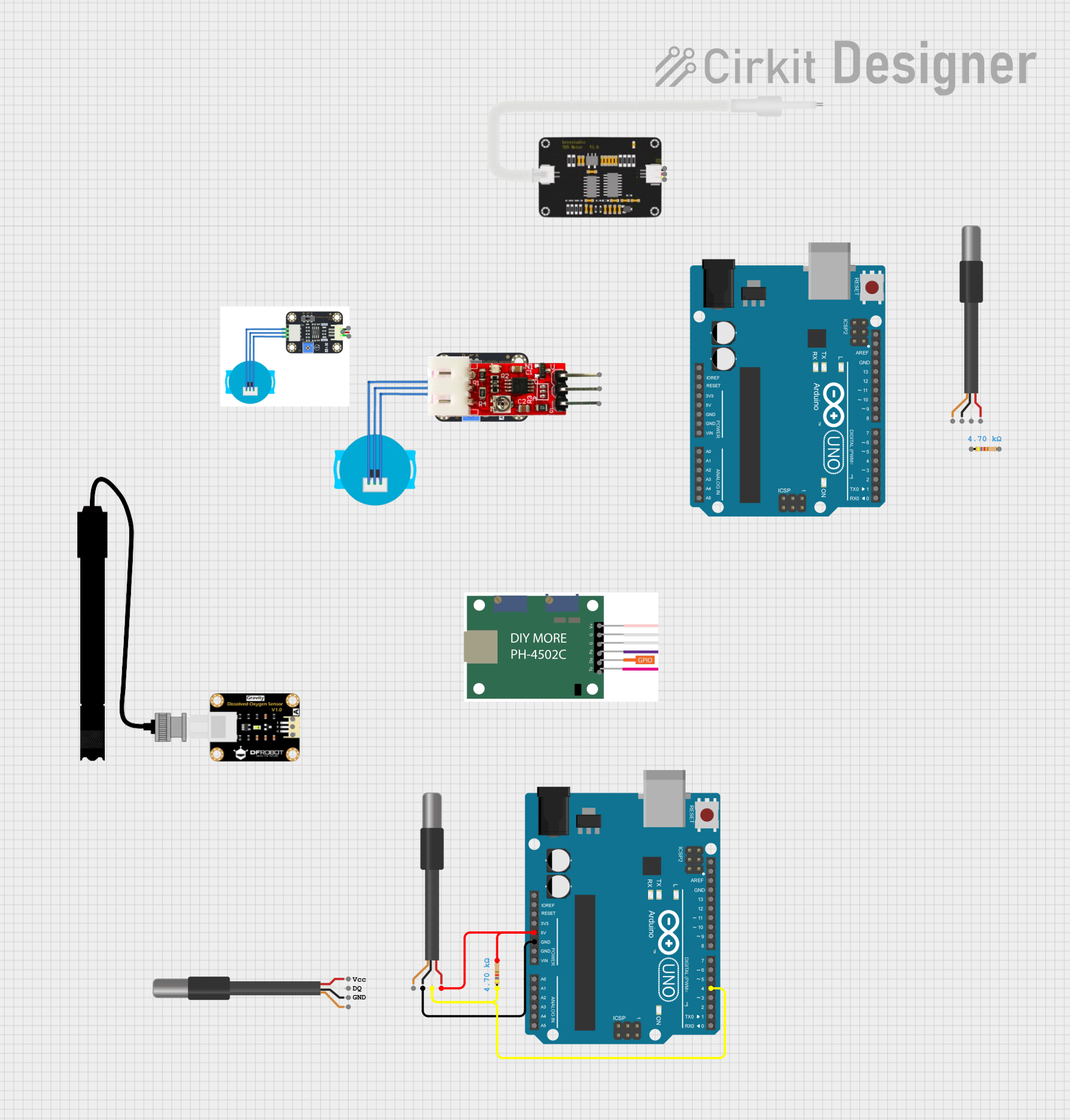
 Open Project in Cirkit Designer
Open Project in Cirkit Designer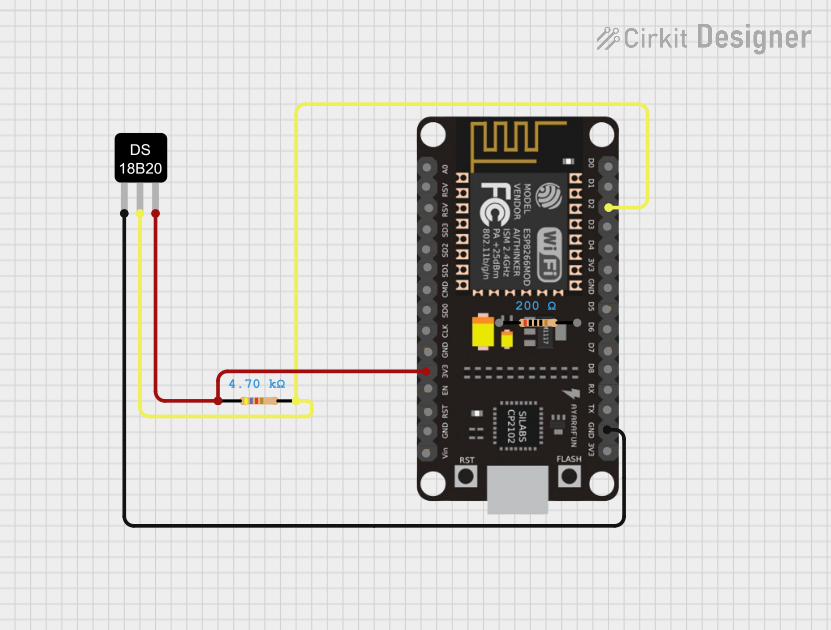
 Open Project in Cirkit Designer
Open Project in Cirkit Designer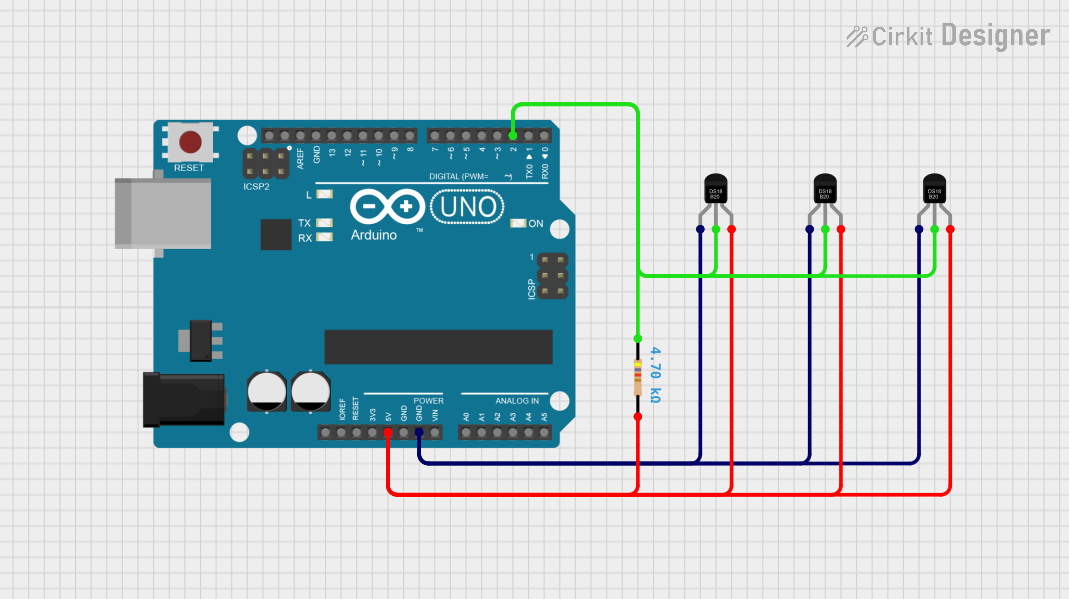
 Open Project in Cirkit Designer
Open Project in Cirkit DesignerExplore Projects Built with DS18B20

 Open Project in Cirkit Designer
Open Project in Cirkit Designer
 Open Project in Cirkit Designer
Open Project in Cirkit Designer
 Open Project in Cirkit Designer
Open Project in Cirkit Designer
 Open Project in Cirkit Designer
Open Project in Cirkit DesignerCommon Applications and Use Cases
- Weather stations and environmental monitoring
- Home automation systems
- Industrial temperature control
- Data logging and IoT projects
- HVAC (Heating, Ventilation, and Air Conditioning) systems
Technical Specifications
- Operating Voltage: 3.0V to 5.5V
- Temperature Range: -55°C to +125°C
- Accuracy: ±0.5°C (from -10°C to +85°C)
- Resolution: Programmable from 9 to 12 bits
- Interface: 1-Wire protocol
- Unique 64-bit Serial Code: Allows multiple sensors on the same bus
- Power Modes: Parasitic power or external power
- Package Options: TO-92, SOIC, and waterproof versions available
Pin Configuration and Descriptions
The DS18B20 typically comes in a 3-pin TO-92 package. The pinout is as follows:
| Pin Number | Name | Description |
|---|---|---|
| 1 | GND | Ground pin |
| 2 | DQ | Data pin (1-Wire communication line, requires a pull-up resistor) |
| 3 | VDD | Power supply pin (can be omitted in parasitic power mode) |
Usage Instructions
How to Use the DS18B20 in a Circuit
Wiring the Sensor:
- Connect the GND pin to the ground of the power supply.
- Connect the VDD pin to a 3.3V or 5V power source (or leave it unconnected for parasitic power mode).
- Connect the DQ pin to a digital I/O pin of the microcontroller. Use a 4.7kΩ pull-up resistor between the DQ pin and the power supply (VDD).
Connecting Multiple Sensors:
- Each DS18B20 has a unique 64-bit serial code, allowing multiple sensors to share the same data line.
- Ensure that all sensors are connected in parallel, with a single pull-up resistor on the shared data line.
Programming:
- Use libraries such as the DallasTemperature library for Arduino to simplify communication with the sensor.
Important Considerations and Best Practices
- Pull-Up Resistor: Always use a 4.7kΩ pull-up resistor on the data line to ensure proper communication.
- Cable Length: For long cables, use twisted-pair or shielded cables to reduce noise and improve reliability.
- Parasitic Power Mode: If using parasitic power mode, ensure the microcontroller can provide sufficient current during temperature conversions.
- Temperature Resolution: Higher resolutions (e.g., 12-bit) require longer conversion times, so adjust your code timing accordingly.
Example Code for Arduino UNO
Below is an example of how to use the DS18B20 with an Arduino UNO:
#include <OneWire.h>
#include <DallasTemperature.h>
// Data wire is connected to pin 2 on the Arduino
#define ONE_WIRE_BUS 2
// Setup a oneWire instance to communicate with any OneWire devices
OneWire oneWire(ONE_WIRE_BUS);
// Pass the oneWire reference to DallasTemperature library
DallasTemperature sensors(&oneWire);
void setup() {
Serial.begin(9600); // Start serial communication at 9600 baud
sensors.begin(); // Initialize the DS18B20 sensor
}
void loop() {
sensors.requestTemperatures(); // Send command to get temperature readings
float temperatureC = sensors.getTempCByIndex(0); // Get temperature in Celsius
Serial.print("Temperature: ");
Serial.print(temperatureC);
Serial.println(" °C");
delay(1000); // Wait 1 second before reading again
}
Code Notes:
- Replace
ONE_WIRE_BUSwith the pin number where the DS18B20's DQ pin is connected. - The
getTempCByIndex(0)function retrieves the temperature of the first sensor on the bus. For multiple sensors, use their unique addresses.
Troubleshooting and FAQs
Common Issues and Solutions
No Temperature Reading:
- Ensure the pull-up resistor (4.7kΩ) is correctly connected between the DQ pin and VDD.
- Verify that the sensor is properly powered (check voltage on the VDD pin).
Incorrect or Fluctuating Readings:
- Check for loose or poor connections in the circuit.
- Use shielded cables for long-distance connections to reduce noise.
Multiple Sensors Not Detected:
- Ensure all sensors are connected in parallel with a single pull-up resistor.
- Use the
getAddress()function in the DallasTemperature library to retrieve each sensor's unique address.
Parasitic Power Issues:
- If using parasitic power mode, ensure the microcontroller can provide sufficient current during temperature conversions.
- Consider using external power (connect VDD to 3.3V or 5V) for more reliable operation.
FAQs
Q: Can I use the DS18B20 with a 3.3V microcontroller?
A: Yes, the DS18B20 operates within a voltage range of 3.0V to 5.5V, making it compatible with 3.3V systems.
Q: How many DS18B20 sensors can I connect to a single data line?
A: Theoretically, you can connect up to 100 sensors on a single data line, but practical limits depend on cable length, power supply, and noise.
Q: What is the maximum cable length for the DS18B20?
A: The maximum cable length depends on the environment and wiring quality. Typically, lengths up to 30 meters are achievable with proper shielding and pull-up resistor values.
Q: Can the DS18B20 measure negative temperatures?
A: Yes, the DS18B20 can measure temperatures as low as -55°C.
Q: How do I increase the resolution of the temperature readings?
A: Use the setResolution() function in the DallasTemperature library to configure the resolution (9 to 12 bits).
By following this documentation, you can effectively integrate the DS18B20 into your projects and troubleshoot common issues.